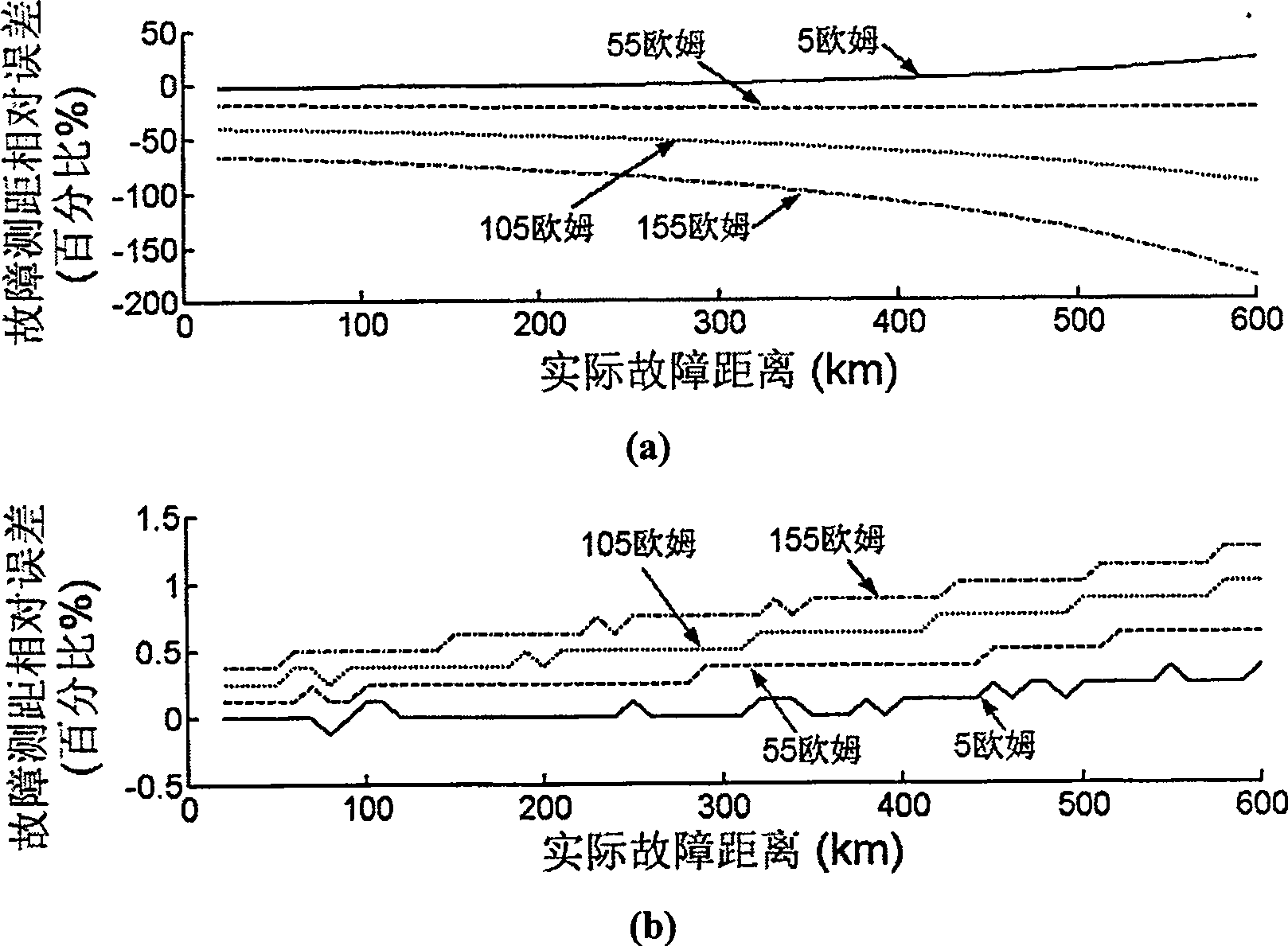Distributing capacitance current and transition resistance influence resisting line one-end fault ranging method
A transition resistance and distributed capacitance technology, applied in the field of power systems, can solve problems such as difficult decoupling, unacceptable errors, and poor anti-transition resistance
- Summary
- Abstract
- Description
- Claims
- Application Information
AI Technical Summary
Problems solved by technology
Method used
Image
Examples
Embodiment Construction
[0037] The embodiment of the line single-ended fault location method against the influence of distributed capacitive current and transition resistance proposed by the present invention is described in detail as follows:
[0038] A type of 1000kV UHV power transmission system applying the present invention is as follows figure 1 As shown, the system is a typical double-ended power supply system, the busbars on both sides are M and N respectively, the line length is 800km, and the line parameter values are shown in Table 1. The system impedance parameters on both sides are as follows. The angle of the N-side power source is 44 degrees behind the M-side, and the potentials of the M-side and N-side are 1.1062 and 1.1069 times the rated voltage respectively. The fault distance measuring device applying the method of the present invention is installed on the M side, and the voltage and current come from the line side voltage transformer (PT) and current transformer (CT) respectively...
PUM
 Login to View More
Login to View More Abstract
Description
Claims
Application Information
 Login to View More
Login to View More - R&D
- Intellectual Property
- Life Sciences
- Materials
- Tech Scout
- Unparalleled Data Quality
- Higher Quality Content
- 60% Fewer Hallucinations
Browse by: Latest US Patents, China's latest patents, Technical Efficacy Thesaurus, Application Domain, Technology Topic, Popular Technical Reports.
© 2025 PatSnap. All rights reserved.Legal|Privacy policy|Modern Slavery Act Transparency Statement|Sitemap|About US| Contact US: help@patsnap.com



